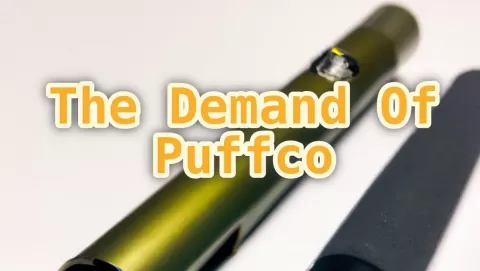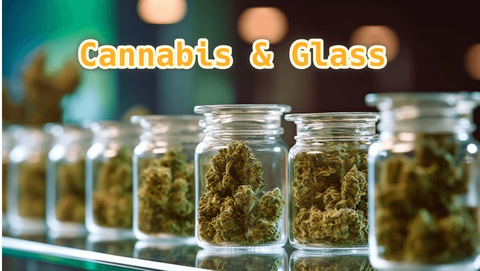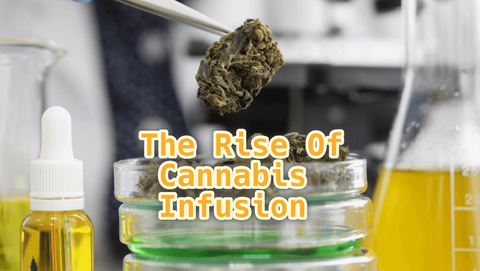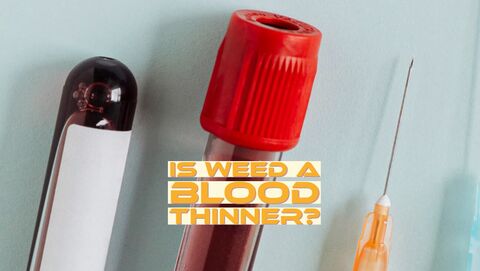Latest Blog Posts
Top rated
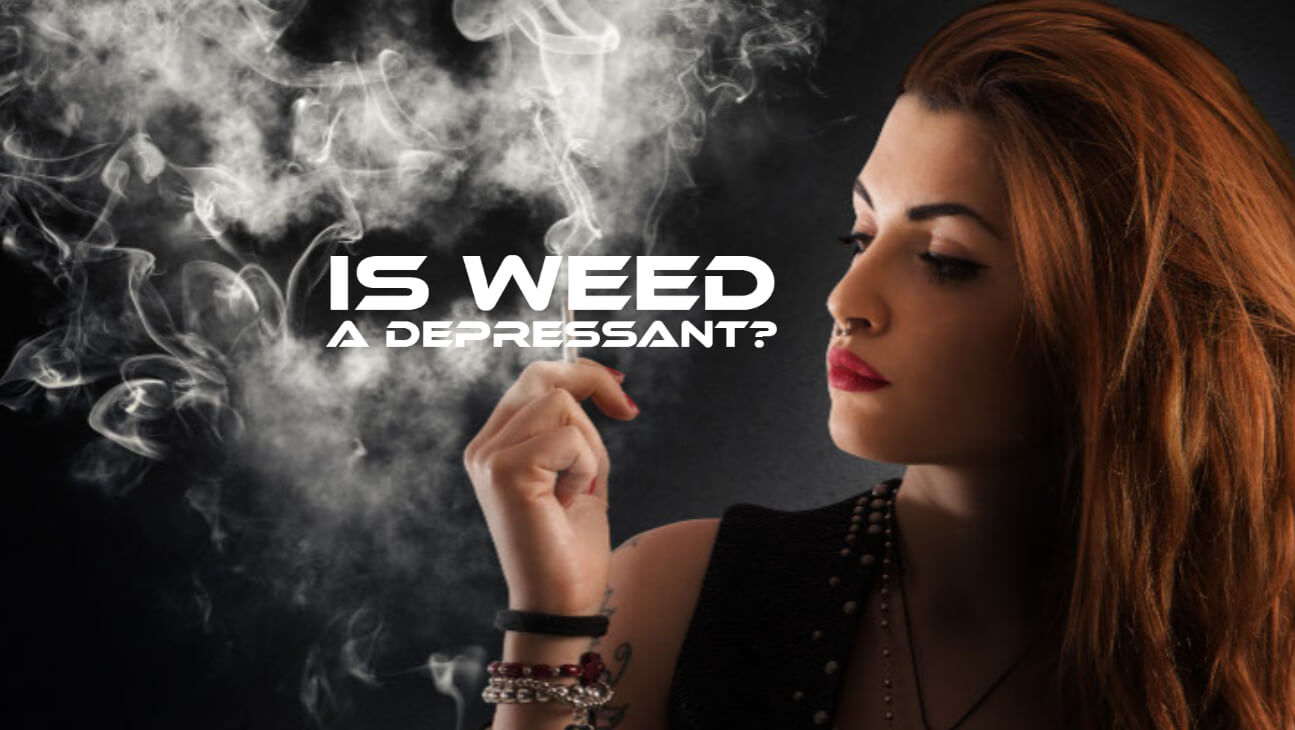
Is Weed A Depressant?
Commonly referred to as weed, marijuana is one of the most popular substances nowadays. The substance has the third-highest abuse rate in the United States, behind only alcohol and cigarettes. However, marijuana usage for medical and recreational purposes is now legal in many states. In places that brand themselves as "dispensaries," customers can purchase a wide selection of marijuana flowers and edibles loaded with the substance's euphoric compounds.
Consuming marijuana has a wide variety of effects on the user. According to the National Institutes of Health, it can have the effects of a stimulant, a hallucinogen, and even a depressant. Cannabis, sometimes known as marijuana, is categorized as a highly psychotropic and hallucinogenic narcotic by the federal government, the Drug Enforcement Administration, and the National Institute on Drug Abuse. According to the CDC's findings, marijuana is the hallucinogen used most frequently. In 2019, it was used at least once by 48.2 million people, which is equivalent to around 18% of all Americans.
If a substance can change how chemicals in the brain and the body normally function, it can be called psychoactive. Most drugs that fall under this category are known to cause severe adverse effects, including shifts in mood, altered sense and perception, observable cognitive changes, and even modifications in thinking and behavior. The possibilities of the mentioned adverse effects are higher in case a person has marijuana addiction.
Inevitably, the annals of marijuana's past are filled with long and complex discussions between consumers over just how to categorize the plant. Although it may reduce anxiety, is marijuana also a depressant? However, the question remains as to whether or not it can be classified as a stimulant. And even while it can create a certain ethereal, is marijuana a depressant, or does it treat mental health conditions? Continue reading to find out the answers.
What Are The Differences Between THC And CBD?
THC and CBD are the two primary psychoactive components that can be extracted from marijuana.
Tetrahydrocannabinol, most commonly referred to as THC, is the principal psychoactive component of marijuana. This is the chemical responsible for most of marijuana's effects, including the psychedelic qualities that marijuana is known for. It is able to do this by affixing itself to and exerting an influence on the receptors in the brain that are responsible for controlling:
- Pleasure
- Concentration
- Memory
- Perception through the senses
- Thinking
- Coordination
Cannabidiol, also known as CBD, is the second most well-known active component. CBD stands for cannabidiol. This component can be obtained straight from the hemp plant, which is similar to the marijuana plant but is not the same. There is no proof that any of the brain's receptors are impacted by CBD in any way. As a result, it can't cause a "high."
The Usage Of Weed Has The Potential To Provide A Relaxing And Calming Effect
There is no denying that marijuana can produce some of the same effects as depressants; perhaps this is the part of its most commonly stigmatized use.
Weed usage has the potential to provide a relaxing and calming effect, as well as the ability to relieve both pain and anxiety. When taken in the hours leading up to bedtime, it can alleviate insomnia symptoms and promote restful sleep. A lot of individuals like weed because it has what's known as a "couch-lock" effect, which makes it easier for them to relax into their favorite chair or sofa and fully immerse themselves in their preferred television program.
It is also capable of producing some of the adverse effects that are linked with the use of depressants, such as drowsiness, loss of memory for the short term, and sometimes a decrease in motivation.
Is Weed A Depressant?
Drugs that slow down activity in the central nervous system are known as depressants. Your brain and spinal cord are the sole components that make up your central nervous system, yet both play an extremely significant role in your body.
This complex system of nerves and neurons transmits information to and from the brain and other body areas. By influencing the levels of a number of different neurotransmitters, depressants are able to slow down the rate at which the body's messages are transmitted across the nerves.

Many different pharmaceuticals, such as benzodiazepines, sleep pills like Ambien, sedatives, dissociatives, and anti-seizure medications, prescription painkillers, and different prescription drugs can potentially depress your central nervous system. Although it can be prescribed and used to good effect, abuse of a depressant can lead to significant difficulties and hazards.
Although many of marijuana's effects are comparable to those of depressants, the drug is not strictly considered to be a depression because it does not affect the levels of gamma-aminobutyric acid, which is an essential neurotransmitter. Instead, marijuana produces its impacts by engaging with the brain in a way that causes dopamine release, a neurotransmitter with strong sedative properties.
Marijuana Can Also Be A Stimulant
The usage of cannabis can improve your mood, stimulate your creativity, and make you feel particularly interested in things like music, movies, and the great outdoors. It has the potential to heighten one's senses, making sexual activity and close physical contact more pleasurable. Making routine activities more exciting and entertaining is one way to give oneself an energy boost, which many people find inspiring.
It can have some of the adverse effects that are associated with stimulants. Marijuana use can bring on feelings of anxiety and paranoia in many people, which, in the most extreme circumstances, can lead to feelings of terror and panic. It is also possible for the heart rate to increase, and many people find that it makes it difficult to sleep since their minds are racing after using it. As a stimulant, it can also cause a "crash," similar to what people call a "marijuana hangover."
When used in excessive amounts (particularly in the form of edibles), cannabis can produce analogous effects to those of hallucinogens. As their earthly bonds begin to weaken, their perspective of time may become more distorted, they may enter a state that is similar to dreaming, and they may even discover that their hold on reality has become somewhat shakier. And even though, in general, marijuana does not create the intense, dissociative, and reality-bending effects that are associated with hallucinogens, this is not always the case.
What Sets Cannabis Apart From All Other Substances In Its Unique Properties?
Cannabis is unusual in some respects when compared to other substances used for recreational purposes and prescription medications.
- Chemical composition: Cannabis does not contain a single active ingredient. This plant produces more than 400 chemical compounds, including cannabinoids, terpenes, and other chemicals. THC is the most well-known of these molecules.
- Cannabis comes in a wide variety of strains, each of which has its own unique characteristics and is highly distinct from the others. Even genetics with the same name can have quite diverse chemical make-ups and, as a result, quite varied actions.
- Unique Experience: The effects of cannabis are not the same between users, and some people may be able to tolerate the drug's side effects better than others.
Cannabis cannot be definitively placed in any of the categories that are used to classify other substances. The effects of cannabis include the following: In point of fact, it is capable of both producing stimulant effects and acting as a "tranquilizer" (or sedative), producing effects that are comparable to those produced by "exciting" chemicals.
Cannabis, on the other hand, is capable of producing some of the symptoms that are usually associated with hallucinogenic compounds (such as a distorted perception of time).
Cannabis Is Not Considered A Depressant
Cannabis is not actually classified as a depressant, although it can produce symptoms similar to those of a depressant. Cannabis's sedative effects are not caused by its ability to operate as a GABA agonist; rather, they are caused by cannabis's ability to boost dopamine levels in the brain.
.jpg?1671732700932)
The research outlined "the indirect impact that cannabis has on the release of dopamine." After that, the researchers went on to detail how chronic use of cannabis can lower the quantity of dopamine that is present in the brain. People typically give off the impression of being unmotivated and lethargic when their dopamine levels are low; these are two prevalent symptoms that are adjusted by depressants.
Like other drugs that depress the central nervous system, cannabis can cause users to build up a tolerance over time. In practice, this indicates that patients require a higher dosage in order to have the same effects. The similarity in the physiological response is what contributes to the misconception that cannabis is a depressant, which is held by a large number of people.
But May The Usage Of Cannabis Actually Cause Depression?
Regarding determining the wider impacts of cannabis usage, scientists are currently engaged in a catch-up effort because cannabis use has been illegal for so many years. Currently, there is no conclusive scientific research associating the use of cannabis with feelings of depression.
Many people use cannabis as a means of escaping their problems. Cannabis use, on the other hand, has been shown to hasten the onset of major depressive disorder symptoms. The following altered condition that is generated enables many people to numb the bad feelings that are already present within.
A large number of cannabis users were interviewed for research in 2008, and their motivations for using the drug were documented. According to the study's findings, "it helped them avoid difficulties and helped reduce the anger and frustration produced by unsatisfactory relationships. Many users experienced this benefit. According to the researchers' findings, 36% of those polled reported using cannabis as a means of issue avoidance.
How Does Cannabis Help Relieve Symptoms Of Depression?
Cannabis is unique among psychoactive substances in that it can aggravate severe depressive disorder symptoms while assisting people already battling this condition. The symptoms of post-traumatic stress disorder were reduced by 75% in patients who had used cannabis, according to a study that was done in 2014.
Patients who are interested in using cannabis for the treatment of depression should be aware of which plant chemicals are most effective. When it comes to modifying the medicinal benefits of cannabis, terpenes are beneficial. Terpenes are especially effective. It has been known for a long time that terpene limonene possesses antidepressant qualities, particularly in relation to the condition of depression.
Anxiolytic effects of limonene were investigated in a study that was published in the journal Pharmacology, Biochemistry, and Behavior (2013). According to the findings of several studies, limonene could be an effective anti-anxiety medication when used in aromatherapy.
In a different study published in 1995, participants included 12 individuals who exhibited signs of depression. After breathing in vapors containing limonene, nine of them continued to take antidepressants even after the exposure.
Can Cannabis Help With Depression?
The function that cannabidiol (CBD) plays in the treatment of a variety of illnesses, including depression and post-traumatic stress disorder, was the subject of research that was done in 2009. Other cannabinoids, in addition to the terpenes found in cannabis, such as limonene, are known to have very stimulating effects. For instance, CBD exhibits some possible beneficial effects when used to treat depression.
According to the findings of the study, cannabidiol (CBD) has a wide range of potential benefits. The influence that it has on the serotonin system in the brain is one of its mechanisms of action. The neurotransmitter serotonin influences a wide variety of bodily functions, including the emotional state and general sense of well-being. People who struggle with depression often have trouble keeping their serotonin levels in check, which is one of the most significant challenges they confront.
Terpenes and secondary cannabinoids play a significant part in extracting the medicinal benefits of cannabis. Terpenes are found in cannabis flowers. Though, if something needs to be done, specific concentrates, such as high THC levels, may not be the best choice for those struggling with symptoms of depression.
How Exactly May Cannabis Be Beneficial?
According to research conducted in the United Kingdom in 2005, approximately 22 % of medicinal marijuana users utilized the drug to treat depressive disorders. Researchers highlight both the feedback from patients themselves as well as the therapeutic role that the human endocannabinoid system plays in their findings.
For instance, a study that was conducted on laboratory animals revealed that there is a connection between the suppression of the endocannabinoid system and the manifestation of symptoms associated with general depressive illness. According to the findings of other studies, the cannabinoid system, when functioning correctly, is capable of producing an effect analogous to that of antidepressants.
Experiments have shown that the THC that is present in marijuana can act not only as an antidepressant but also as a depressant, depending on the dosage that is taken. This is despite the fact that researchers have identified the human endocannabinoid system as playing a part in alleviating or eliminating symptoms of depression.
In particular, a research paper that was released in 2007 demonstrated that low dosages of a synthetic version of THC (WIN 55,212-2) were able to raise serotonin levels in laboratory rats and had a powerful antidepressant effect. At the same time, however, using the medicine in excessive dosages led to the opposite effect and made depressive symptoms more severe. It is essential to know that WIN 55,212-2 is approximately 20 times more potent than the naturally occurring THC found in marijuana.
According to research conducted on people afflicted with chronic pain brought on by illnesses such as cancer or multiple sclerosis, THC can have an antidepressant effect under some circumstances. In addition, it was discovered that the drug can boost both the individuals' moods and overall well-being.
Notably, THC also encourages active neurogenesis, also known as the development of new brain cells, in the same way as conventional antidepressant medications do. Along with excessive consumption of alcohol, tobacco, opioids, and cocaine, stress and depression are vital contributors to decreased neurogenesis.
How Long Does The Effect Of Marijuana Last?
A person who does not regularly come into contact with cannabis is likely to have the question, "How long do the effects of marijuana last?" on their mind. It's possible that he is going to drive a car or participate in some significant discussions, and the individual simply does not want to get into a risky or stupid situation. However, it will not be simple to provide a clear and unambiguous response. The length of time that the effects of using cannabis will last is contingent on a number of factors, including the following:
- Cannabis strains variety,
- The amount of cannabis and other psychoactive compounds,
- The quantity of the product that was taken,
- The tolerance of the taster
The cannabinoids and other active chemicals that cannabis possesses are responsible for its sedative or, on the other hand, euphoric, stimulating action. Tetrahydrocannabinol, or THC for short, is the component that is responsible for the majority of the psychoactive effects. The strength of marijuana and the length of time that its effects will last are directly related to the number of cannabinoids found in the plant's flowers.
The Number Of Psychoactive Compounds Found In Various Types Of Cannabis
So, suppose you are not only referring to wild plants you discover by the side of the road somewhere. In that case, you will find that you are looking at various cannabis plants with a THC level ranging from 15-25% and occasionally even 30%. In this specific case, only a few seconds are required to create a significant impact. In most cases, the period of exposure ranges from two to four to five hours. The effects will peak for the first two hours, after which they will begin to fade.
It is essential to have a solid understanding of the fact that the effects of Sativa and Indica will last for various amounts of time. The euphoric rush brought on by a strain with a higher proportion of Sativa will be felt to be more intense, but it will not last quite as long. After a number of hours have passed, the taster will simply revert back to its initial state.
.jpg?1671732802783)
On the other hand, the Indica strains provide long-lasting relaxation, the effects of which can endure for hours and keep you relaxed throughout the day. The hybrids are more adaptable in this regard: at first, one experiences a satisfying lift, which is then followed by a gentle and pleasurable physiological relaxation after some time has passed.
On the market today, you can also discover cannabis strains that have a low total cannabinoid concentration (THC). If the THC level in the marijuana you use for recreational purposes is between 10 and 18 percent, the high you experience will be less intense, and you will need to increase the amount of marijuana you consume in order to feel its full effects.
These sorts are an excellent option for novices, but experienced tasters will need to increase their dosage by at least a factor of two if they want the impact to last longer than thirty minutes to an hour.
A Wide Variety Of Chemical Compounds In Cannabis Flowers
Cannabis flowers contain a wide variety of chemical compounds, including THC, cannabinoids, terpenes, and flavonoids. When combined, their effects might either have the opposite effect and lengthen or shorten the duration of the impact.
For instance, the presence of the cannabinoid CBC makes it simpler for tetrahydrocannabinol to bind to the cannabinoid receptors that are found throughout the body, allowing for a more rapid rate of absorption. This indicates that product effects with a high CBC content can be felt almost immediately, but they do not continue as long as they did in the beginning.
Linalool is a type of terpene that is found in cannabis and is responsible for the drug's effects that last for a more extended period. These buds have a characteristic aroma of lavender, which is contributed to by this aromatic ingredient, which also allows the effects to persist for a more extended period.
The effects of eating strains that have a high concentration of this terpene might linger in the body for at least six hours after consumption. Some tasters, who are not experienced with this type of strain, even start to worry that the effect may never go away because they have no idea how long it will last.
The Relationship Between The Length Of The Impact And The Way Cannabis Is Consumed
Inhalation and ingestion are the two options through which the psychoactive components of cannabis can be absorbed into a person's body. To put it more simply, you might inhale the smoke or consume some dish that has been made with cannabis oil, buds, or leaves. How one consumes marijuana significantly impacts the high that one experiences from using the drug. This information may come as a surprise to some people.
Lung absorption of THC and other active cannabinoid compounds is by far the most common and well-established way into the body from which these compounds can be absorbed. The lungs are made up of millions of tiny alveoli, which are the pathways through which gas exchange occurs.
As a result of the fact that the surface area of the alveoli is several times more than the skin's surface area, the process of absorbing THC chemicals from inhaled smoke can be completed in a matter of seconds. The entire amount of consumed tetrahydrocannabinol is instantaneously absorbed into the bloodstream. If the taster does not continue and stops there, the body will digest the cannabinoids within two to four hours, at which point the impact will no longer be present. Blood pressure and brain function will become normal.
When it comes to food, though, the pattern looks quite different. As soon as they reach the digestive system, the active chemicals begin their slow absorption. Because of the way that the stomach is constructed, the release of THC takes place in manageable doses. Consequently, it can take the tester 30 to 60 minutes, and in rare instances, it can even take a couple of hours before they feel the initial effects of the cannabis.
Based on the findings, consuming cannabis products should only be done in moderate amounts to reduce the risk of experiencing unanticipated side effects. The impact itself, on the other hand, will remain for a significantly more extended period of time as a result of the gradual digestion; this duration can range anywhere from 6 to 24 hours, depending on the variety and the amount consumed.
Everyone Is Different
The length of time that a person feels weed effects depends, to a significant part, on the characteristics of that person. When the metabolism speeds up, the active cannabis components enter the circulation more quickly; however, they are also digested more quickly when the metabolism speeds up, which means that the effects will wear off more quickly.
On the other hand, people who have a slower metabolism will feel the effects of the same portions for a more extended period. The amount of time a person has been consuming marijuana also plays a significant role in determining how their body reacts to cannabinoids.

If a person's body is exposed to a specific group of psychoactive chemicals consistently for an extended amount of time, tolerance to those substances will eventually develop in the individual. This indicates that a greater quantity of the completed product will be required to provide an effect comparable in terms of both its intensity and its endurance. Whereas someone who is just starting out might find that a modest amount of cannabis with a high THC level is enough to satisfy their needs. Therefore, it is recommended that beginners select types with minimal levels of THC and taste the buds with caution.
How To Make The Effects Of Marijuana More Enhanced
Which of marijuana's effects are you hoping to experience? Someone seeks the relief of pain through the consumption of a medicinal plant, is trying to deal with the boredom of everyday life, and simply wants to unwind after a hard day's work and get rid of the continual stress they've been feeling. And everybody wants to get the most out of a limited amount of cannabis by maximizing its effects. There are a few techniques that will enhance the effects of cannabis and make them last for a more extended period.
When consumed, particular chemicals trigger a speeding up of the metabolic process. This indicates that the effects of marijuana will wear off faster than they would have otherwise. And the most important contributors to this effect are the foods you eat and the water you drink.
Consuming large amounts of fluids causes the metabolism to speed up, which in turn causes all of the active chemicals to be excreted in the urine. In this instance, the effect that usually stays in place for three to four hours will wear off after an hour or two. The case is the same with regard to eating.
%20(1).jpg?1671733049908)
There are strains of cannabis that produce cravings that are impossible to ignore, but cannabis consumers are aware that the substance's potency decreases dramatically after being exposed to cold temperatures for an extended period of time. The compounds that enter the bloodstream and speed up the metabolism are to blame for this, as they are the cause.
If you want the feeling of euphoria and relaxation in your body to last for a more extended period of time, it is best to limit how much water and food you consume after each new dose of weed. This will help you get the most out of your high. If you want to mitigate the side effects of marijuana usage and bring your life back to normal as quickly as possible, you can use the same characteristics.
A hearty snack, particularly a meal high in fat and plenty of water, will significantly cut down on the amount of exposure and cut down on the length of time that the effects will last.
Varieties With Effects That Last For A More Extended Period Of Time
The Ultimate Classic 100% Indica With A Distinctive Flavor And Lingering Effects
Critical Kush fem is the ultimate classic 100% Indica with a distinctive flavor and lingering effects. The Indica strains are naturally resilient and resistant to the damaging effects of external factors. They thrive in natural environments, although indoor grow boxes are also suitable for them.
Even if you just have a limited amount of growing space, the plants will still be able to reach their full height of 100–110 cm. The plantation flowers rapidly and fragrantly, and it takes between 55 and 60 days for the fruit to mature. During this stage, dense cones that are packed to the brim with resin will begin to form. They smell fresh and woodsy with a hint of citrus and contain 25% total cannabidiol. Tasting it causes a profound relaxation of the muscles and a distancing from the stresses of daily life.
The Brilliant Fruity-Floral Aroma With The Combined Effect Lasts For A Long Time
Black Widow female is a balanced combination of Sativa and Indica genetics, emphasizing the Indica side of the spectrum. Both indoor and outdoor cultivation of the plants is successful when done correctly. However, keep in mind that plants can reach a height of 1.5 to 2 meters, which means that the Indica grower needs to have the ability to train their plants to limit how tall they get.
Since this variety is resistant to disease and exceptionally resilient, the grower shouldn't have any other issues to deal with. The flowering time for the bushes is not very long—only eight to ten weeks—but it should be over by the end of October.
Its blossoms are highly resinous and aromatic. The output is between 350 and 450 g/m2 in the box and between 300 and 400 g per bush when grown outside. After drying, you'll appreciate the brilliant fruity-floral aroma and the combined effect that lasts for a long time.
This One Is Well Recognized For Having Powerful Effects That Persist For A Long Time
The Wedding Cake female hybrid is a hardy and undemanding hybrid that will provide the gardener with a bountiful crop. It is well recognized for having powerful effects that persist for a long time. Moreover, it is ideal for seasoned cultivators as well as novices who are just starting out in the industry and do not yet know all of the ins and outs of the procedure.
Since this is a plant that does not experience a lot of stress, it will be an excellent period to perfect your training skills and increase your yield. The flowering stage of an indoor plant takes approximately 8–9 weeks to complete. Because the buds give off a strong odor, an air filter will likely be required during the flowering phase. With a THC level of between 25 and 28 percent, the yield per square is approximately 400 grams of buds.
Providing A Pleasant Feeling Of Relaxation Throughout The Body
The Super Lemon Haze female will lift one's spirits and leave them feeling happy and content. It is not just the results, which are bright and stimulating, but also the unpretentious nature of the hybrid, which does not require a lot of effort to cultivate. The only potential issue is the height of the plants, which can range from 50 to 70 inches. However, this problem can be easily solved by performing early pruning and bending the bushes.
After ten weeks of flowering, the plantation should be able to produce approximately 800 grams of inflorescences per square if the plants are given adequate light and the grower is not overzealous with the application of fertilizers. More than a kilogram of cones can be harvested from each shrub, and they will be ready for picking by the middle of October.
The final result opens up opportunities for creative expression and improves communication. At a minimum, the impact lasts for three to four hours before gradually giving way to a pleasant feeling of relaxation throughout the body.
An Outstanding Alternative For Managing Stress, Lack Of Sleep, And Appetite Loss
Royal Queen Seeds' Haze Berry is a hybrid strain that takes the most excellent qualities of both Sativa and Indica strains. Because it contains up to 20% THC, the high is intense and lasts for a considerable amount of time. This plant has an incredible flavor and aroma of berries, and it certainly deserves to be highlighted for those qualities.
Because the bushes have a typical Sativa structure and the flowers have the potential to become resinous and enormous, it is essential to ensure that the branches are entirely handled. When grown indoors, it will only reach a height of 60–100 centimeters, making it an ideal candidate for a grow box, but when grown outdoors, it will reach a height of 160–180 centimeters.
It takes between 63 and 84 days for the plant to finish flowering, and the entire area is flooded with a brilliant and delicious aroma during this time. The final product first excites and stimulates the nervous system, then dramatically relaxes you, providing you with several hours of peace and tranquility. An outstanding alternative for managing stress, lack of sleep, and appetite loss.
The Bottom Line
Anti-depressants are types of drugs that is characterized by their ability to reduce activity within the central nervous system. Your brain and spinal cord are the only elements that constitute your central nervous system, yet, both of these organs play a crucial part in the functioning of your body as a whole.
It is the responsibility of this intricate system of nerves and neurons to carry information to and from the brain as well as to and from other body parts. Depressants are able to slow down the rate at which the body's messages are carried across the neurons because they affect the levels of several different neurotransmitters.
It is possible for a wide variety of drugs, including benzodiazepines, sleep aids, sedatives, dissociatives, and anticonvulsant medications, to depress your central nervous system. Although it can be prescribed and used for an excellent purpose, abuse of a depressant can lead to severe difficulties and risks. This is the case even though it can be used to good advantage. Some psychoactive drugs can even cause some hallucinogenic effects. Despite this, many people prefer using a psychoactive drug for different mental health conditions.
Even though many of marijuana's effects are comparable to those of depressants, the substance is not strictly considered to be a depressant because it does not affect the levels of gamma-aminobutyric acid, which is an essential neurotransmitter regulating mood levels. This is the main reason why marijuana is not considered to be a depressant. Instead, marijuana produces its effects by interacting with the brain in a way that triggers the production of dopamine, a neurotransmitter that is known for its potent sedative qualities.
Disclaimer: This material is for informational purposes only and should not be relied on for legal, medical, financial, or any other form of professional advice.



